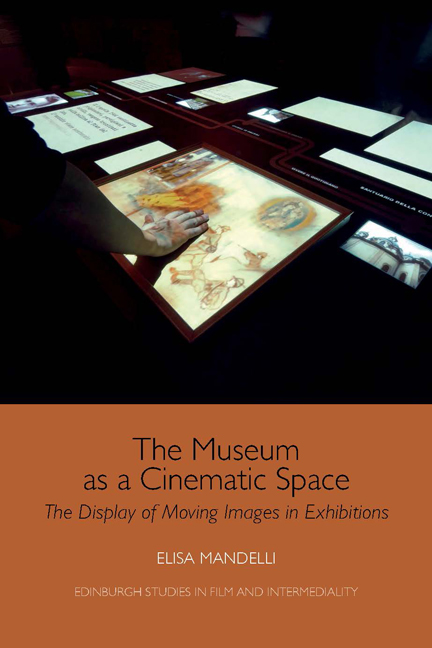Conclusions
Published online by Cambridge University Press: 24 October 2019
Summary
In the first part of the book, the in-depth study of the Mutoscopes at the Imperial War Museum proved to be strategic in many ways. On the one hand, it brought to light a lesser-known form of film exhibition for an institution renowned for its role as a film archive. On the other hand, the close investigation of the use of cinematographic devices in the halls of this museum provided a wealth of details about a practice that was at the time uncommon but not unique.
The study of exhibitions designed by twentieth-century avant-garde artists allowed me to show not only how moving images were progressively incorporated in museums’ galleries, but also how the design of the exhibition spaces was shaped according to the cinematic model, deploying in space the principles of unfolding, montage, and movement, and applying these principles to both images and audiences.
In the 1960s and 1970s, with the advent of video technology, moving images spread in the exhibition spaces of museums, with a number of pioneering experimentations. Videos were not accessory tools, but played an increasingly essential role in the configuration of the whole space, in the transmission of contents, and in the establishment of a stronger relationship with the public. The analysis of museum professionals’ discourses about the use of moving images in exhibitions outlined the opportunities and problems arising at that time, as well as the roots of present-day curatorial discussions.
The investigation of the contemporary landscape allowed me to map out the various uses of moving images in contemporary museum installations. My aim was to identify how moving images permeate and deeply transform the museum's space, and how the latter could be shaped by intertwining with components of the cinematic dispositif.
Some of the exhibitions I described evoke features typical of the cinematic experience inside the movie theatre, as it is deep-rooted in the collective imagination (what Bellour defines as ‘le vrai cinéma’ – the ‘true cinema’): the images projected on a screen, the dark room, the immobility of the spectator. However, most of the displays analysed in this book distance themselves more dramatically from this model.
- Type
- Chapter
- Information
- The Museum as a Cinematic SpaceThe Display of Moving Images in Exhibitions, pp. 137 - 138Publisher: Edinburgh University PressPrint publication year: 2019



